Old Khmer Inscription (K.1056) on a Bronze Sconce (P.Ch.23)
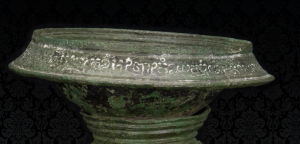
Si Mahosot, Prachinburi, Thailand. Prachinburi National Museum. Bronze hoard, sconce P.Ch.23 (après National Museums Database)
o 1115 śaka vraḥ juṃnvan vraḥ pādakamrateṅañ śrījayavarmmadeva ta vraḥ ārogyasāla nāsaṃvok o
Bronze mirror base inscription (K.1053)
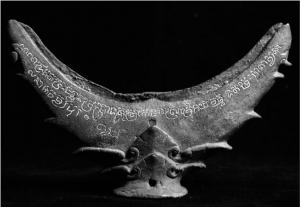
Bronze mirror inscription K.1053 (après ฐานข้อมูลจารึกในประเทศไทย)
1. o 1115 śaka vraḥ juṃnvan vraḥ pāda kamrateṅ añ śrijayavarmma da ta vraḥ ārogyasā
2. la nā śiravatsapura (or: avadhyapura?)
Bronze mirror base (P.Ch.21) with an inscription (K.1053) in Old Khmer
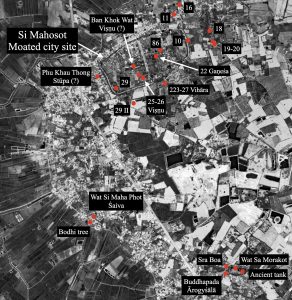
Thailand (Prachinburi). Si Mahosot. Main historical and archaeological sites.
Prachinburi National Museum (Prachinburi). Finds from Si Mahosot (including mirror base P.Ch.21).

Bronze mirror base with inscription K.1053 (après ฐานข้อมูลจารึกในประเทศไทย)
Bronze mirror base with an inscription (K.973) in Old Khmer
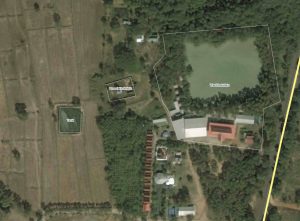
Prasat Khok Ngiu (tambon Pakham, amphoe Pakham, changwat Buriram). Satellite view (Wikimapia).
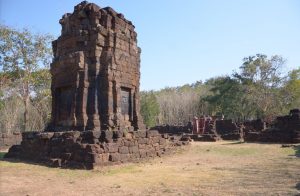
Prasat Khok Ngiu (tambon Pakham, amphoe Pakham, changwat Buriram). Ruins of the Khmer complex after conservation.
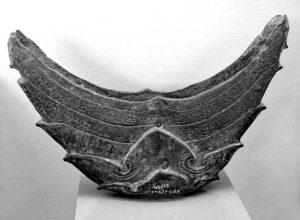
Prasat Khok Ngiu (tambon Pakham, amphoe Pakam, changwat Buri Ram). Mirror base with inscription in Old Khmer (K.973). Bangkok National Museum.
Bronze mirror inscription (K.973)

Prasat Khok Ngiu (tambon Pakham, amphoe Pakham, changwat Buriram). Mirror base, Bangkok National Museum.
Source: SEAclassics Old Khmer
Donation to a Royal Hospital
| Śaka 1114 = CE 1192 |
Say Fong : Stèle des hôpitaux de Jayavarman VII
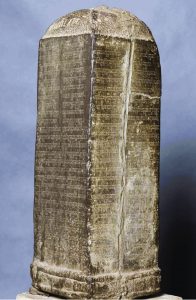
Say Fong (Laos). Stèle de Jayavarman VII (après Lorrillard 2018).
Say Fong : Inscription of Jayavarman VII
Inscription with information on Hospital Networks in ancient Cambodia.
INIG1282a Gwalior fort inscription of VS 1282a
INIG1282a āṣāḍha śudi 9 śukravāra Gwalior fort (Gwalior). In the bed of Gaṅgolā tāl. 10 lines, nāgarī, Sanskrit. Records the desilting of the tanks Gogataḍāga and Rājasaras on Gopādri by Talhaṇadevikā, queen of Vigraharāja and mother of the ruler. Further mentions Aruṁdhatī, daughter of Mithilā and wife of king Malayakṣitīśa. The composer was Ānakichūka, son of Yāśodeva and the engraver was ṭha˚ (i.e. ṭhakkur) Vāghadeva. At the end mentions Jivādevī as the queen of the ruler and as the mother of the prince Harivarman and Jayavarman.
Kondamudi copper plates of Jayavarman
Kondamudi Charter of Jayavarman, year 10
This set of 8 copper plates were discovered in the village of Kondamudi and were secured together with a ring and seal. The seal is stamped with an image of a trident, a box, a crescent moon and a circular legend which is written in different characters to those found on the copper plates.
The charter records that Mahārāja Jayavarman donated the village of Pāṇṭūra in the district of Kūdūra to 8 Brāhmaṇas. The donated village was split into 24 shares and divided between the Brāhmaṇas as follows:
Śarvaguptārya, a householder of the Gautama gotra – 8 shares
Savigija of the Tānavya gōtra – 3 shares
Goginaja – 3 shares
Bhavannaja of the Kauṇinya gōtra – 2 shares
Rudavennhuja of the Bhāradvāja gōtra – 1 ½ shares
Tśvaradattārya of the Kārshṇāyana gōtra – 1 ½ shares
Rudaghōshārya of the Aupamanyava gōtra – 1 share
Skandarudrārya of the Kauśika gōtra – ½ share
(This division does not total 24 shares however).
The charter was issued from Kūdūra on the 1st day of the 1st fortnight of winter in the 10th year of Jayavarman’s reign. The donated village was made as brahmadēya and Jayavarman is described in the inscription as belonging to the Bṛhatphalāyana gōtra and a worshipper of Mahēśvara, a form of Śiva. The donation was made to increase the donor’s life span and to secure victory in war.
Sircar, Altekar and Majumdar date Jayavarma’s reign to around the end of the 3rd century and the beginning of the 4th century AD, suggesting he was a contemporary of the early Gupta kings.
